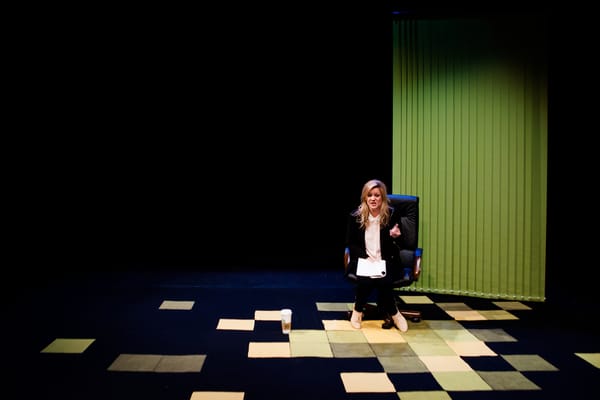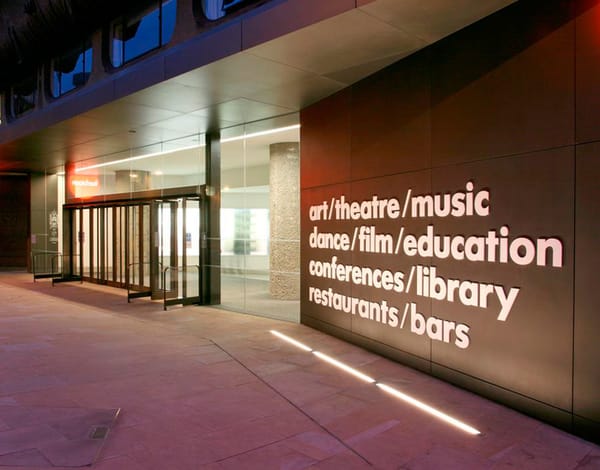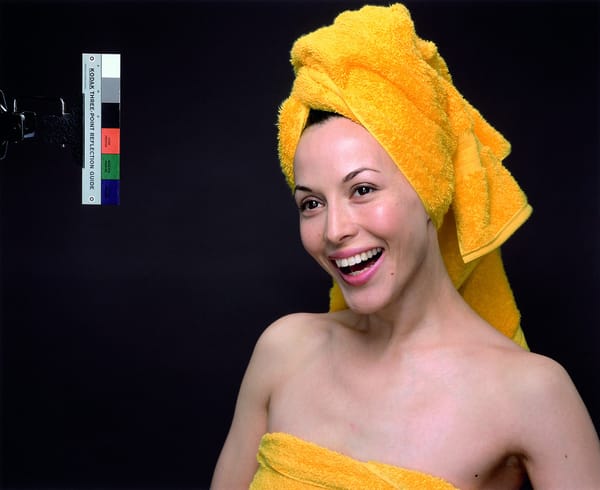Celebrating the Queen of Modernism
Jingjie Cheng on the ROH’s new ballet, based of Virginia Woolf’s work
From the very opening moments of Woolf Works, the audience realises that what they are about to experience will not be anything one would expect from a conventional ballet, but a bold, mixed-media theatrical experiment with dance as its main act.
We are greeted by a recording of Virginia Woolf’s own voice, musing on the intricacies of language, as the stage fills up with a cloud of projected words, and Alessandra Ferri’s Mrs Dalloway stands alone on the centre of the stage. Split into three acts, the Royal Ballet resident choreographer Wayne McGregor’s first full-length ballet corresponds to three separate stories by Woolf – Mrs Dalloway (1925), Orlando (1928) and The Waves (1931).
Called back from retirement at 52 to carry the central character of the first and third acts, Ferri is a commanding presence on stage, her dark hair and eyes and beautifully expressive body embodying the melancholy of Clarissa Dalloway, the eponymous upper-class housewife from what is arguably Woolf’s most famous work. It is clear, however, that the ballet is as much about the characters as the author herself, as we feel her presence shift in and out of Clarissa, weaving her personal narrative into her heroine. In the third act when Ferri returns, she is Woolf herself, both an outsider and participant to her own story as she dances around her struggles with mental illness and eventual suicide. Ferri delivers a performance that is both technically superb and intensely emotional, lending a deep sincerity to McGregor’s choreography.
The first act follows the narrative of _Mrs Dalloway _closely, and it is possible to identify the heroine dancing with her husband while observing her younger self. The stage is anchored by three large wooden frames that the characters dance in and out of, gliding through the past and present, through fiction and reality. In a parallel world, mentally disturbed war veteran Septimus, played by a captivating Edward Watson, tries to free himself from his own shell-shocked mind while holding on to his wife, who is all that is left of his tenuous link to reality. It is a sparse act, with not more than five dancers on stage at any one time, but the result is an intensely affecting one, helped by Max Richter’s beautifully flowing score.
It is unfortunate that the three acts were not more connected to each other – it seemed instead like three separate mini ballet performances. After the very moving first act, the second, supposedly based on Orlando, came as a surprise, with laser beams slicing through space and time and troops of androgynous dancers marching up and down the stage in golden bodysuits complete with ruffs and tutus. It was more of an impression of Orlando’s time-travelling narrative and gender fluidity, rather than a faithful interpretation. McGregor, known precisely for such post-modern takes on ballet, seemed to use energetic movements both individually and collectively to capture the relentless pace of the novel. While interesting at first, the act got repetitive quickly, and seemed to try too hard to be avant-garde. All the fancy embellishments only distracted from the dancers themselves. At times, the score here also bordered on unpleasant, with whirring electronic notes and techno beats that, together with the flashing neon beams made the theatre feel like a giant club.
The Waves is one of Woolf’s most experimental novels, revolving around the narratives of its six characters from childhood till old age, exploring their individual stories but also their collective experience of life. Weaving in Woolf’s own story into this act was apt, I felt, especially since the novel was said to be inspired by the lives of those around her. The act begins with a poignant reading of Woolf’s suicide note, as a slow-motion movie of waves crashing onto the shore plays atmospherically in the background throughout. Young dancers blended in with older ones, creating a fabric of the journey of life, moving across the stage like the motion of the tide. Ferri’s Woolf occasionally joins in their dance, and even dances with the characters, but mostly we feel her troubled presence being tossed around the human waves around her, as she decides, eventually, to drown herself, just like the character Rhoda in her story.
Woolf was known as a literary innovator of her time, part of the influential Bloomsbury group of artists and intellectuals. The three stories chosen in this ballet were all radical in their own way, whether it was the all-in-a-day stream of consciousness narrative of Mrs Dalloway, the gender non-conforming and time-travelling Orlando, or the interwoven narratives of The Waves. In a way, the unconventionality of Woolf Works captures this spirit of challenging boundaries with its interesting use of words, recordings, movies, sets, and lighting. Ballet is also a very technically demanding art form requiring precision, which makes it a fascinating medium to experiment with freedom and originality within structure.
An enjoyable, albeit long, performance with an interesting take on the author and her works, Woolf Works indeed has moments of brilliance, but it still has some way to go in being tastefully experimental without overwhelming the senses with attention-seeking gimmicks.
Woolf Works is on at the Royal Opera House until 26th May. Tickets from £4. Available online.









